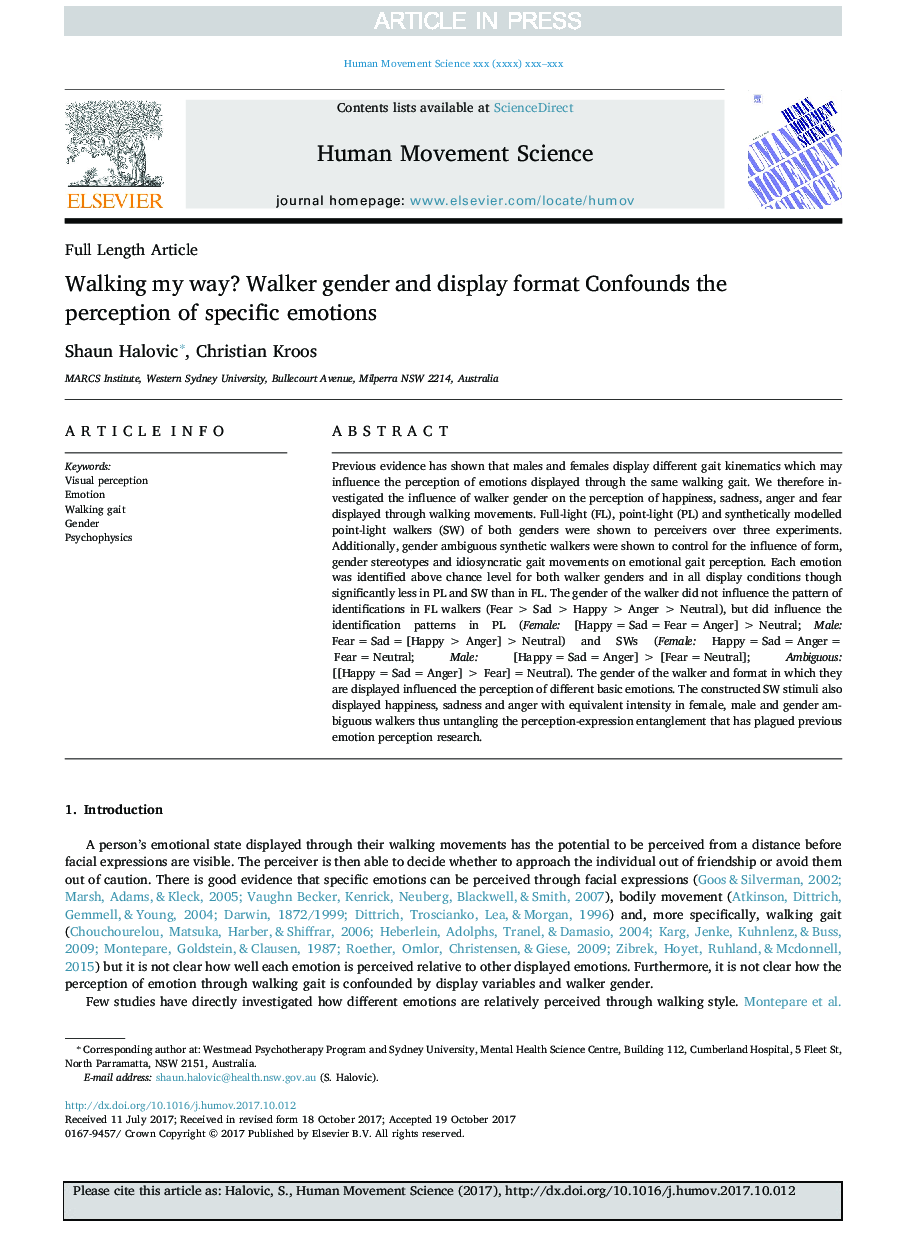| Article ID | Journal | Published Year | Pages | File Type |
|---|---|---|---|---|
| 7291077 | Human Movement Science | 2018 | 17 Pages |
Abstract
Previous evidence has shown that males and females display different gait kinematics which may influence the perception of emotions displayed through the same walking gait. We therefore investigated the influence of walker gender on the perception of happiness, sadness, anger and fear displayed through walking movements. Full-light (FL), point-light (PL) and synthetically modelled point-light walkers (SW) of both genders were shown to perceivers over three experiments. Additionally, gender ambiguous synthetic walkers were shown to control for the influence of form, gender stereotypes and idiosyncratic gait movements on emotional gait perception. Each emotion was identified above chance level for both walker genders and in all display conditions though significantly less in PL and SW than in FL. The gender of the walker did not influence the pattern of identifications in FL walkers (Fearâ¯>â¯Sadâ¯>â¯Happyâ¯>â¯Angerâ¯>â¯Neutral), but did influence the identification patterns in PL (Female: [Happyâ¯=â¯Sadâ¯=â¯Fearâ¯=â¯Anger]â¯>â¯Neutral; Male: Fearâ¯=â¯Sadâ¯=â¯[Happyâ¯>â¯Anger]â¯>â¯Neutral) and SWs (Female: Happyâ¯=â¯Sadâ¯=â¯Angerâ¯=â¯Fearâ¯=â¯Neutral; Male: [Happyâ¯=â¯Sadâ¯=â¯Anger]â¯>â¯[Fearâ¯=â¯Neutral]; Ambiguous: [[Happyâ¯=â¯Sadâ¯=â¯Anger]â¯>â¯Fear]â¯=â¯Neutral). The gender of the walker and format in which they are displayed influenced the perception of different basic emotions. The constructed SW stimuli also displayed happiness, sadness and anger with equivalent intensity in female, male and gender ambiguous walkers thus untangling the perception-expression entanglement that has plagued previous emotion perception research.
Related Topics
Life Sciences
Neuroscience
Cognitive Neuroscience
Authors
Shaun Halovic, Christian Kroos,
